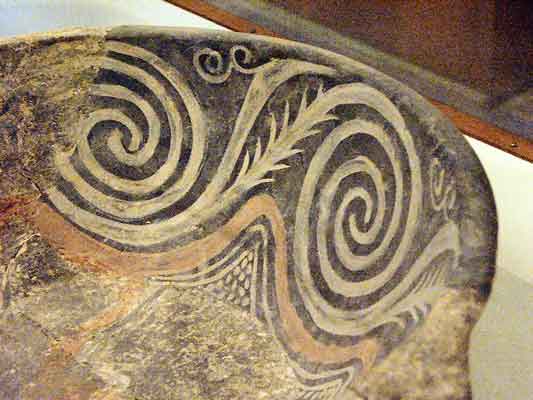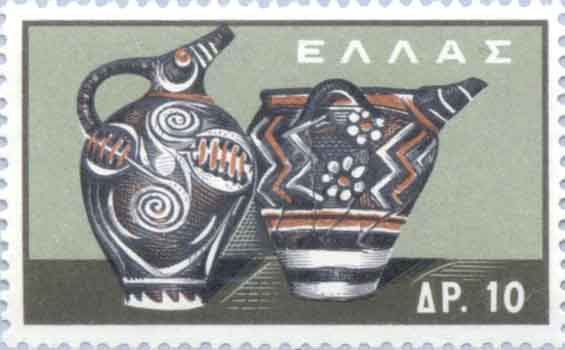|
|
 Vase Ornament in Kamares Style , Archaeological Museum of Herakleion Crete, Photo by Agon S. Buchholz
Minoan Pottery from Phaistos in the Kamares Style , c. 1800 BC. Kamares ware is named for finds in the cave santuary at Kamares, in fact one of the few non-palatial sites where this ware has been found. It is the first of the virtuoso wares of Minoan pottery, though the first expressions of recognizably proto-Kamares decor predate the introduction of the potter's wheel. Finer clay, thrown on the wheel, permitted extravagantly thin bodies, which were covered with a dark-firing slip and exhuberantly painted with slips in white, reds and browns in fluent floral designs, of rosettes or conjoined coiling and uncoiling spirals. The best of thes elite Kamares ware were never equalled in the Bronze Age Aegean. Four stages of Kamares ware were identified by Gisela Walberg (1976), with a "Classic Kamares" palace style sited in MMII, especially in the palace complex of Phaistos. New shapes were introduced, with whirling and radiating motifs.. In MMIIB the increasing use of motifs drawn from nature heralded the decline and end of the Kamares style. The end of MMIIB is marked ca1750 by the catastrophe, probably an earthquake, that levelled the palaces. In the ensuring MMIII, when the palaces were rebuilt, pottery lost its status as an elite vehicle for artistic expression, though this is the period of Minoan expansion that inspired the Greek tradition of a great Minoan thalassocracy. Creto-Minoan Ceramic styles Agios Onouphrios Style | Barbotine Style | Floral Style | Kamares Style | Koumassa Style | Marine Style | Orientalizing Style | Palace Style | Pyrgos Style | Vassiliki Style | White Style Retrieved parts from "http://en.wikipedia.org/"
 |
||||||||||||||||||

